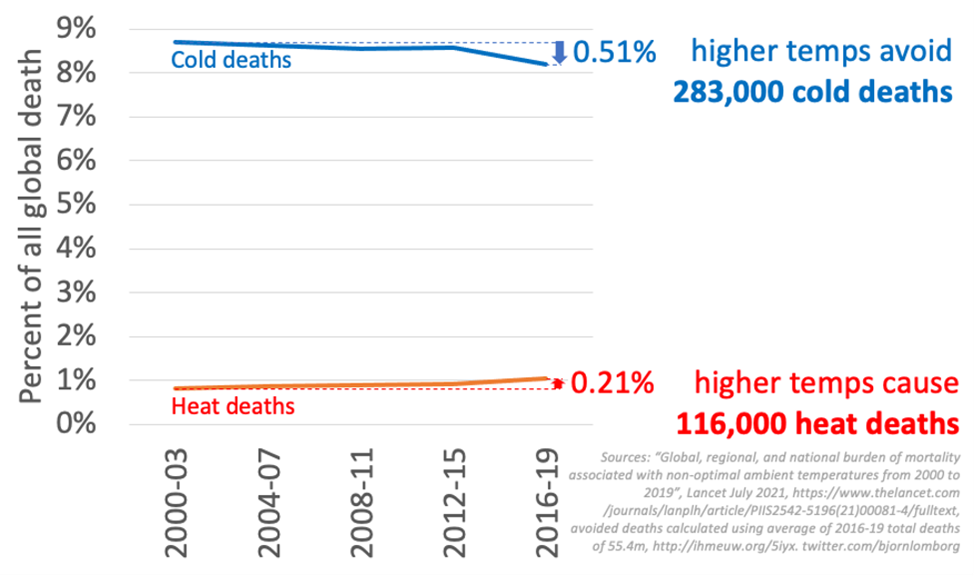A recent article from The Conversation (TC), titled “COP29: Climate change could kill millions and world leaders must work to limit fatalities,” warns climate change is likely to cause millions of deaths. This is false. A critical examination of empirical data reveals the opposite: deaths due to extreme weather events have significantly decreased over the past century, even as greenhouse gas emissions have risen.
Historical data outlined in Climate at a Glance indicates a substantial decline in fatalities attributed to extreme weather. In the 1920s, such events caused approximately 485,000 deaths annually. By 2020, this number had plummeted to around 7,790 deaths per year, marking a reduction of over 98 percent. This dramatic decrease occurred during a period of significant global industrialization and increased greenhouse gas emissions, negating the assertion that climate change is leading to higher mortality rates.
According to this Associated Press article, the reduction in weather-related deaths can be largely attributed to improved preparedness, early warning systems, and enhanced resilience. For instance, the United Nations has highlighted that better disaster management practices have led to fewer fatalities, even as the frequency and intensity of certain weather events have increased.
Countries like India and Bangladesh have implemented effective measures that have significantly reduced deaths from cyclones and other extreme weather events.
The Conversation’s claim that “climate change could kill millions” lacks empirical foundation. While it’s crucial to acknowledge and address the potential impacts of climate change, projections leading to alarmist conclusions often rely on worst-case climate model scenarios that fail to account for human adaptability and technological progress. Such narratives can lead to unnecessary fear and may divert attention from practical solutions that are already proving effective.
It is also important to consider that cold-related deaths have historically outnumbered heat-related deaths, as seen in the figure below.
Research shows that deaths associated with cold temperatures significantly exceed those related to heat, by almost 10 to 1. As global temperatures have modestly risen, the decrease in cold-related deaths has contributed to a net reduction in temperature-related mortality. This is confirmed by studies published in The Lancet, the Southern Medical Journal, and by the Centers for Disease Control and the National Health Statistics Reports: Cold is the biggest temperature related killer, not heat. These studies also indicate the slight warming we’ve seen over the past century has reduced overall mortality related to extreme temperatures. This positive trend should continue if the earth persists in modestly warming.
Extreme weather can be deadly, and the potential risks associated with it should not be ignored. Still the evidence is clear, unlike what is implied in The Conversation article, extreme weather has not increased during the present period of climate change, and data clearly shows deaths resulting from both extreme weather events and non-optimum temperatures have declined dramatically. It is essential to ground discussions in empirical evidence and historical context. The Conversation’s motto is “Academic rigor, journalistic flair.” In this article’s coverage of climate change, The Conversation betrays the first part of its motto. The Conversation’s readers would be better served if the publication relied on facts to inform its work on climate change, not alarming flights of fancy.






















